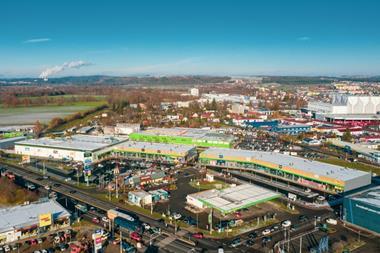Institutional investor target allocations to real estate have plateaued globally for the first time in 10 years, while European investors’ targets actually fell, according to a survey of 175 investors from 25 countries.
The 11th annual Institutional Real Estate Allocations Monitor, published by Hodes Weill & Associates and Cornell University’s Baker Program in Real Estate, found that allocations remained flat in 2023 at 10.8%, amid a backdrop of economic uncertainty, rising interest rates and a dearth in transactions.
Last year, the survey found that capital deployment had slowed in 2022, but target allocations still rose by 10bps from 10.7%.
Institutions in the Americas expect to hold target allocations flat over the next 12 months, but EMEA-based institutions, with the highest target allocation at 11.5%, indicated an intention to lower target allocations by 20bps. Nearly 20% of institutions in Europe reported an intention to lower target allocations.
Asia-Pacific was the only region to report an anticipated increase, with target allocations expected to rise 50bps from 9.5% in 2023 to 10% in 2024.
The majority of institutions are at or over their target allocations to real estate, with nearly 40% of survey respondents reporting overallocation to the asset class by an average of 200bps, in comparison to 32% of institutions in 2022 by an equal margin.
The denominator effect, where falling public markets push up investors’ allocations to private markets, appears to be beginning to abate, according to the report, following a rebound in public equities from a low in September 2022 and write-downs in private real estate portfolios.
The latest report from Hodes Weill and Cornell University found that institutional investors have focused on managing existing portfolios amid falling market valuations.
In 2022, institutions saw real estate portfolio returns moderate to 9.5%, following strong performance in 2021 when institutions reported the highest returns generated over the past decade at 17.1%. The return is consistent with historical averages and is 100bps above institutions’ average target return of 8.5%.
Survey respondents expect further declines, and potentially negative returns, in 2023 as portfolios continue to take write-downs.
While the survey finds that institutions expect to hold target allocations steady in 2024, investors believe the next few years will prove to be good vintage years to capitalise on expected dislocation and distress.
The survey’s ‘conviction index’, which measures institutions’ view of real estate from a risk-return perspective, increased from 6 to 6.4 – its second-highest level since the survey launched in 2013.
Douglas Weill, managing partner at Hodes Weill & Associates, said: “While target allocations are flat year over year, this follows 10 years of increases totalling 190bps, which represents an increase of over 20%. Moreover, the industry has consistently outperformed relative to target returns over the long-term.
“Despite short-to-medium-term macroeconomic disruption, investor conviction in the asset class remains near its high, and the asset class continues to play an important role in institutional portfolios alongside other alternative allocations, including private equity, private credit and venture capital. From a macro perspective, the looming wall of debt maturities may be the catalyst for valuations to find a bottom, encouraging investors to return from the sidelines.”
To read the latest IPE Real Assets magazine click here.





















